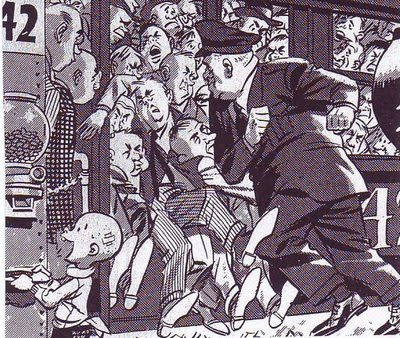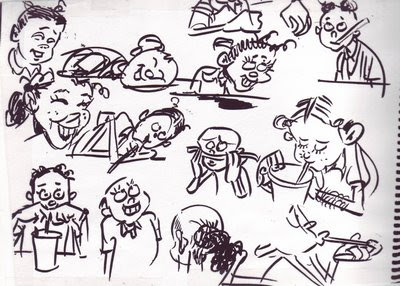
I do. These pictures were assembled from the margins of papers I was doodling on while thinking yesterday. These aren't good drawings but I include them here because they help make a point, namely that without cartooning we'd never be able to record a lot of the little things in life.
I don't know about you but my life doesn't contain many super events. When I'm not working most of my day consists of waiting while old ladies argue with the cashier, trying to eat while driving, complaining about the state of the world, oogling girls, trying to find a pen that works, etc. Illustrators like super hero artists aren't interested in stuff like this. If cartoonists didn't draw it then it would go completely unrecorded by artists.
I just saw a DVD of "Cars" and was struck by how little "small event" acting the film contained. The cars displayed fear of the dark, shyness and awkwardness when the story required it but these were clearly subordinated to the story and were never allowed to dominate whole sequences. For contrast think of how W.C. Fields devoted entire sequences of his movies to micro events like trying to shave when someone was blocking his view of the mirror.




















